20 Easy Breakfast Ideas for Gestational Diabetes (No Eggs)
This post may contain affiliate links. That means if you click and buy, I may receive a small commission (at zero cost to you). Please see my full disclosure policy for more details.
Here are the 20 breakfast options for gestational diabetes (GDM) without eggs.

You know how important it is to start the day with breakfast without spiking your blood sugar, and you want the best for both you and your baby. You need a low-carb, high-protein breakfast to manage your fasting numbers.
But after weeks of eggs, you start to have egg fatigue.
I get it. Every single morning I used to eat eggs because they’re quick and convenient. I tried it all: scrambled, sunny-side-up, fully fried, poached—you name it. But after weeks of this, I was very sick of eggs.
After experimenting, I’ve come up with 20 egg-free breakfast options for gestational diabetes.
They’re all super easy to make, under 45g carbs, and can be whipped up in under 15 minutes!
Why is Breakfast Important?
Here’s why breakfast is a game-changer when managing gestational diabetes:
- Blood Sugar Control:
- Stabilizes blood sugar and prevents spikes.
- Helps avoid hypoglycaemia (aka very low blood sugar), keeping both you and your baby safe.
- Energy Boost:
- Provides the energy you need to power through your day.
- Improves focus and concentration.
- Nutritional Intake:
- Packs in essential nutrients like carbs, protein, fiber, and healthy fats.
- Supports your baby’s growth and development.
- Meal Planning:
- Sets the tone for smart eating choices throughout the day.
- Helps prevent overeating and those mid-day cravings.
Can I Skip Breakfast with Gestational Diabetes?
NOOOOO! I know sometimes it is really tempting to skip.
But skipping breakfast with gestational diabetes is a no-go:
- Blood Sugar Spikes: Skipping breakfast can lead to higher blood sugar levels later in the day because your body becomes more insulin-resistant after fasting.
- Energy Crashes: Without breakfast, you might feel low on energy, sluggish, and more likely to overeat during your next meal.
- Risk of Hypoglycemia: Skipping meals can cause low blood sugar (hypoglycemia), which can be dangerous for both you and your baby.
To help you, my 20 breakfast options for gestational diabetes with no eggs are all easy, quick and simple to prepare.
Key Nutritional Components
The American Diabetes Association recommends that pregnant women should consume at least 1,800-2,000 kcal of calorie, 175 g of carbohydrate, a minimum of 71 g of protein, and 28 g of fiber daily.
So if you break it down into every meal, here’s the portion sizing for your breakfast:

- Complex Carbohydrates: Stick to complex carbs like whole grains, oats, or sweet potatoes. These digest slowly, keeping your blood sugar in check.
- Lean Protein: Protein helps slow down the absorption of carbs, preventing spikes.
- Unsaturated Fats: Adding healthy fats like avocado, nuts, or olive oil can further stabilize blood sugar and keep you feeling full longer.
- Fiber: Fiber-rich foods like whole grains, fruits (low glycemic), and vegetables help improve digestion and control blood sugar.
- Hydration: Water or low-sugar beverages are essential for overall health and managing blood sugar.
Tips: Make sure to stick to portion size for sugar control and always go for low glycemic index foods.
Related: Low glycemic index food list up to +650 foods
Disclaimer: The information provided here is based on personal experience and research. Always consult with a healthcare professional or registered dietitian for personalized advice on breakfast options for gestational diabetes.
I have mild anemia, so my dietitian recommended I bump up my intake of meats, seafood, and even fortified cereals to boost my iron levels.
Everyone’s needs are different.
Meal Prep Tips
If you’re like me, mornings are pure chaos—getting two little girls ready, managing tantrums, and squeezing in meetings.
I used to grab instant oatmeal on the go, but with gestational diabetes, that’s no longer an option.
Now, I focus on being smart with meal prep to get quick, balanced breakfasts daily:
- Plan Ahead:
- Spend a few minutes each weekend planning your breakfast menu.
- Chop veggies, cook grains, and portion out proteins in advance.
- Cook in Bulk:
- Prepare large batches of items like scrambled eggs or turkey sausage. Store them in the fridge for quick, nutritious meals throughout the week.
- Make Grab-and-Go Options:
- Prepare easy, portable breakfasts like overnight oats, chia pudding, or egg muffins.
- Use Freezer-Friendly Meals:
- Cook and freeze items like low-carb pancakes or breakfast burritos. Just reheat for a convenient, balanced breakfast.
Managing mornings with gestational diabetes can be a challenge, but a little prep can make a big difference.
20 Egg-less Breakfast Options for Gestational Diabetes
What Can I Eat for Breakfast with Gestational Diabetes?

1. Greek Yogurt with Berries and Chia Seeds
Mix 1½ cups plain Greek yogurt with ⅓ cup mixed berries and 2 tbsp chia seeds. Let sit for 10 minutes.
- Macros: 350 kcal, 35g carbs, 35g protein, 15g fat, 10g fiber
- Caution: Use plain, unsweetened yogurt to avoid added sugars.
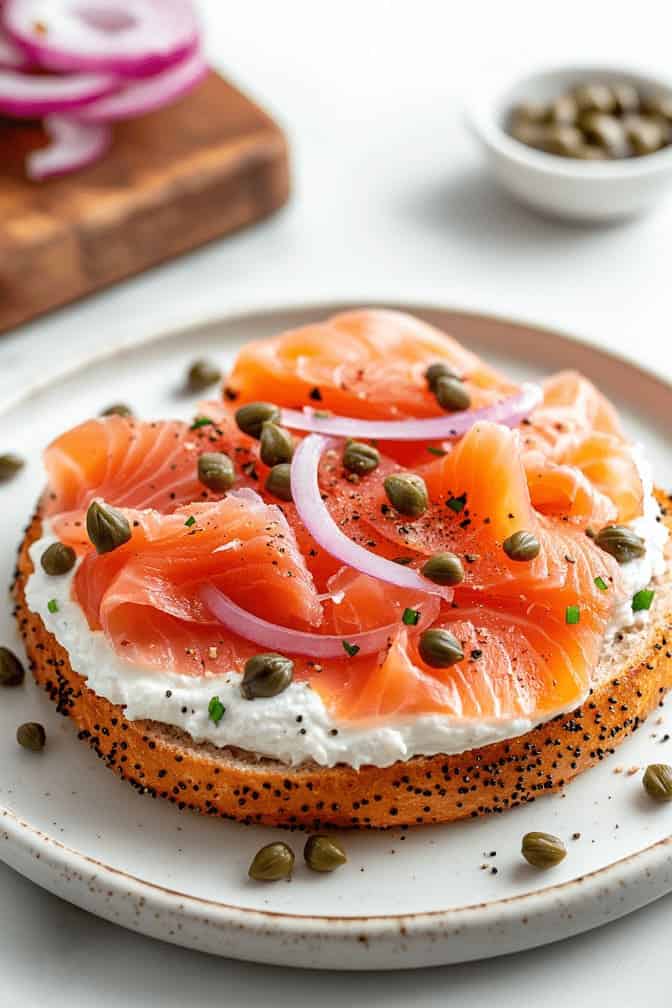
2. Low-Carb Bagel with Cream Cheese and Smoked Salmon
Spread 2 tbsp cream cheese on a low-carb bagel and top with 2 oz smoked salmon. Add capers and sliced red onions if desired.
- Macros: 470 kcal, 30g carbs, 40g protein, 15g fat, 6g fiber
- Caution: Ensure the bagel is low-carb and choose plain cream cheese.
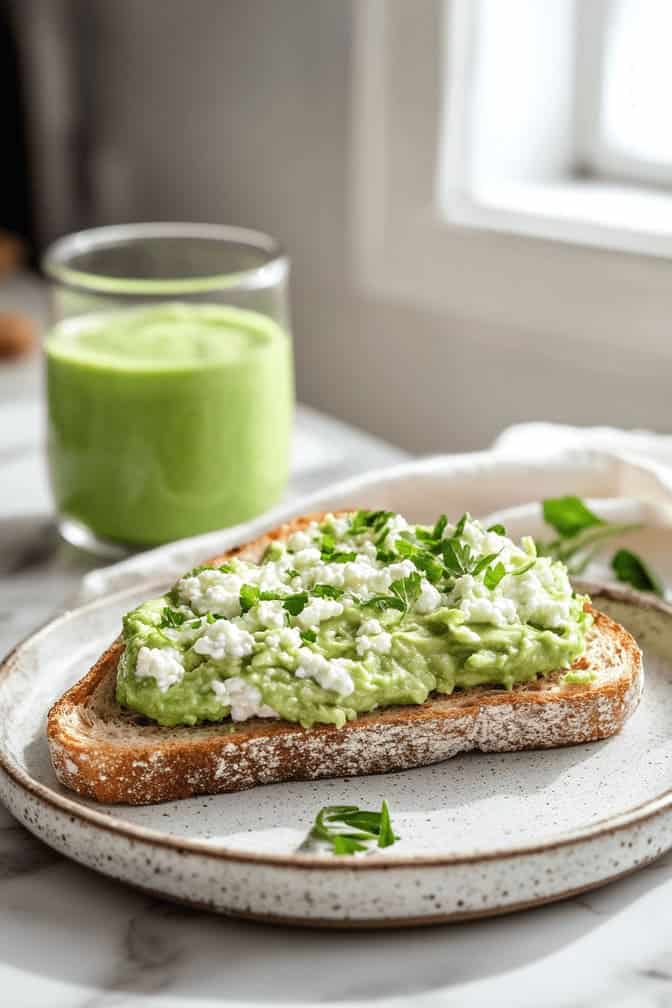
3. Avocado and Cottage Cheese on Whole Grain Toast
Toast 1 slice whole grain bread. Mash ½ avocado and spread it on the toast, then top with ¾ cup low-fat cottage cheese.
- Macros: 440 kcal, 30g carbs, 30g protein, 14g fat, 10g fiber
- Caution: Opt for high-fiber, whole grain bread to balance carbs.
4. Tofu Scramble with Spinach and Bell Peppers
Sauté 1 cup crumbled tofu with 1½ cups spinach and ½ cup chopped bell peppers in 1 tsp olive oil. Serve with 1 slice of whole-grain toast.
- Macros: 450 kcal, 30g carbs, 25g protein, 15g fat, 8g fiber
- Caution: Use plain tofu without any pre-marinated seasonings to avoid added sugars.
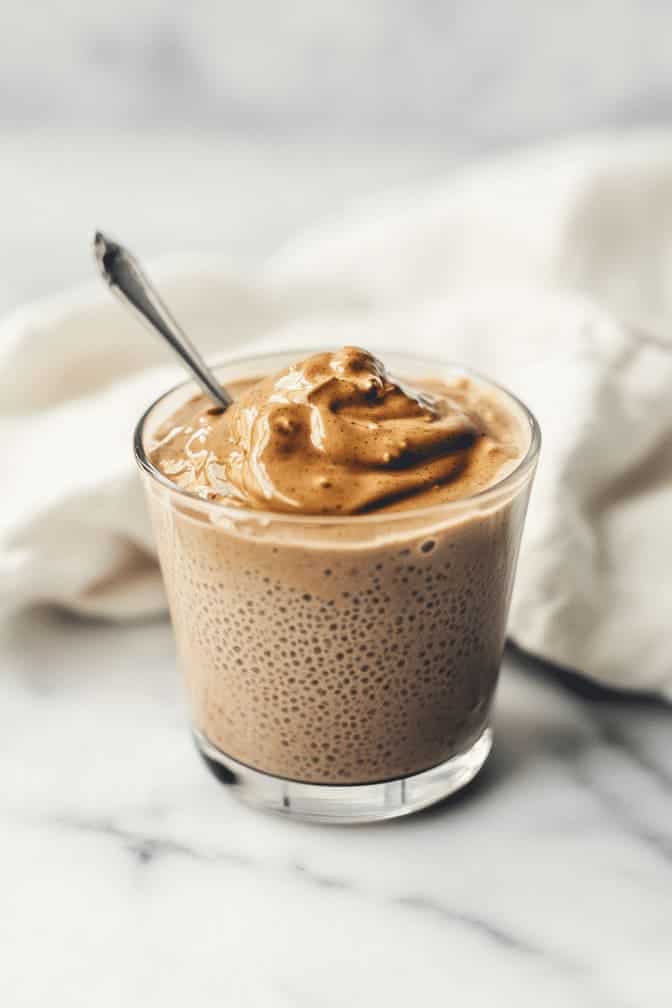
5. Chia Pudding with Milk and Almond Butter
Mix 3 tbsp chia seeds with 1 cup unsweetened milk and let sit overnight. Stir in 1½ tbsp almond butter before eating.
- Macros: 450 kcal, 30g carbs, 22g protein, 25g fat, 15g fiber
- Caution: Stick to unsweetened milk and avoid sweeteners.
6. Cottage Cheese with Cucumber, Tomatoes, and Whole-Grain Crackers
Combine 1¼ cup low-fat cottage cheese with ¾ cup sliced cucumber, ½ cup cherry tomatoes, and 4-5 whole-grain crackers. Season with salt and pepper.
- Macros: 400 kcal, 35g carbs, 28g protein, 12g fat, 5g fiber
- Caution: Choose unsweetened, low-fat cottage cheese.

7. Protein Smoothie with Spinach, Avocado, and Milk
Blend 1 scoop protein powder, 2 cups spinach, ½ avocado, and 1¼ cups unsweetened milk. Serve with ½ cup berries on the side.
- Macros: 400 kcal, 30g carbs, 30g protein, 14g fat, 8g fiber
- Caution: Choose a low-carb, unsweetened protein powder.
8. Overnight Oats with Flax Seeds and Cinnamon
Mix ½ cup oats, 1 tbsp flax seeds, 1 scoop protein powder, 1 cup unsweetened almond milk and a pinch of cinnamon. Let sit overnight.
- Macros: 400 kcal, 40g carbs, 30g protein, 15g fat, 8g fiber
- Caution: Use unsweetened almond milk and avoid adding sweeteners like honey.

9. Almond Flour Muffins with Blueberries
Preheat the oven to 350°F (175°C). In one bowl, mix ½ cup almond flour, 1 scoop vanilla protein powder, 1 tsp baking powder, 1 tsp cinnamon, and a pinch of salt. In another bowl, whisk 1 large egg, 2 tbsp unsweetened applesauce, and 1 tsp vanilla extract. Combine wet and dry ingredients, then fold in ¼ cup blueberries and 1 tbsp walnuts if desired. Spoon the batter into muffin tins and bake for 15-18 minutes.
- Portion: 2 muffins
- Macros: 550 kcal, 35g carbs, 20g protein, 25g fat, 6g fiber
- Caution: Avoid added sugar in the muffins and use fresh, unsweetened blueberries.
10. Zucchini Fritters with Greek Yogurt Sauce
Grate 1 medium zucchini and mix with 2 tbsp almond flour. Fry in 1 tsp olive oil. Serve with 1 cup Greek yogurt mixed with lemon and garlic.
- Portion: 3-4 fritters
- Macros: 550 kcal, 30g carbs, 30g protein, 25g fat, 6g fiber
- Caution: Use plain, unsweetened Greek yogurt.
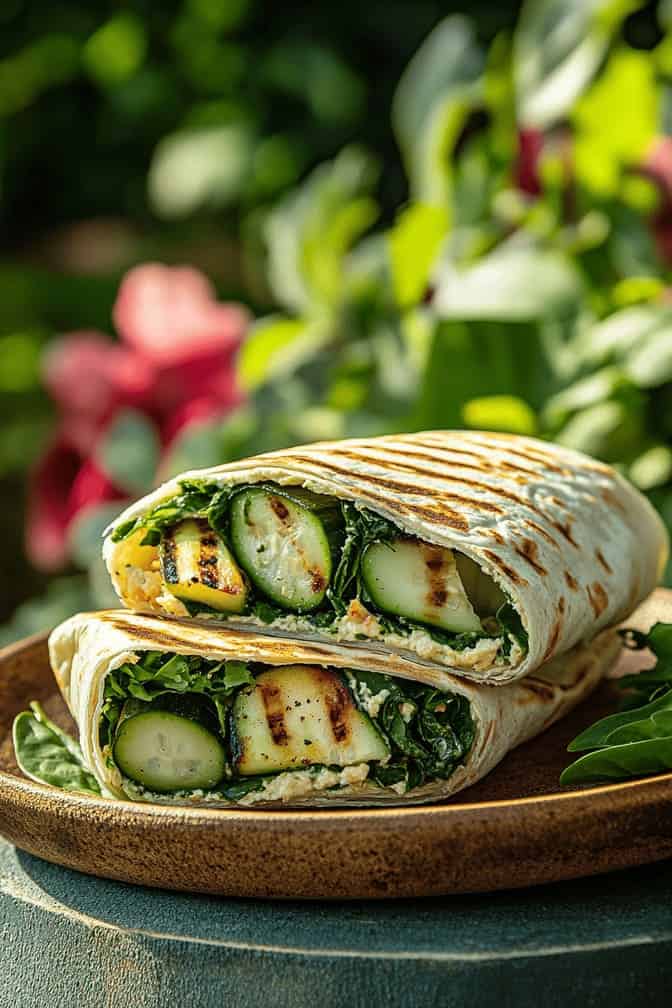
11. Veggie Wrap with Hummus and Spinach
Spread 3 tbsp hummus on a low-carb tortilla. Layer 2 cups spinach, cucumber slices, and grilled zucchini. Roll and slice in half.
- Macros: 350 kcal, 35g carbs, 10g protein, 20g fat, 13g fiber
- Caution: Choose a low-carb tortilla and check hummus for added sugars.
12. Low-Carb Granola with Almond Milk and Flax Seeds
Mix ½ cup low-carb granola with 1 tbsp flax seeds and 1 cup unsweetened almond milk. Let sit for a few minutes.
- Macros: 400 kcal, 30g carbs, 20g protein, 20g fat, 9g fiber
- Caution: Use sugar-free low-carb granola to keep carbs in check.
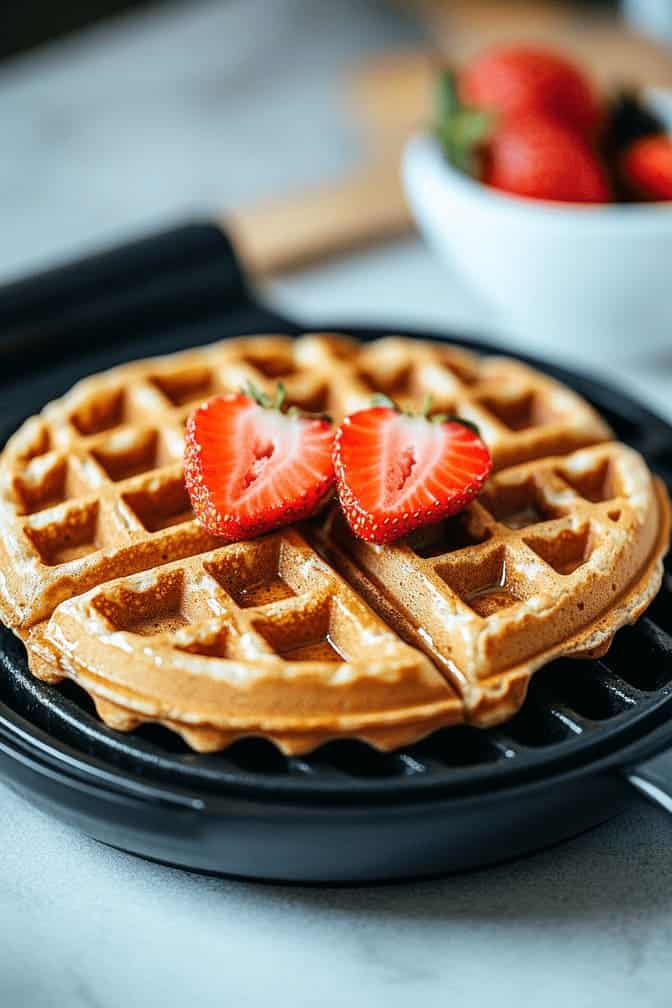
13. Low-Carb Waffles with Almond Flour and Strawberries
Mix ⅓ cup almond flour, 1 scoop protein powder, and 1 tbsp coconut oil. Cook in a waffle maker. Top with ¼ cup sliced strawberries.
- Portion: 2 waffles
- Macros: 400 kcal, 35g carbs, 30g protein, 25g fat, 10g fiber
- Caution: Avoid syrup or sweeteners, and use fresh, unsweetened strawberries.
14. Cauliflower Hash Browns with Avocado Slices
Grate 2 cups cauliflower and mix with 4 tbsp almond flour. Form patties and fry in 2 tsp olive oil. Serve with ½ avocado sliced on the side.
- Portion: 5-6 hash brown patties
- Macros: 450 kcal, 30g carbs, 35g protein, 25g fat, 10g fiber
- Caution: Make sure the hash browns are fully cooked for proper texture.

15. Low-Carb Crepes with Coconut Flour and Strawberries
Mix ⅓ cup coconut flour, 1 scoop protein powder, and ¼ cup unsweetened almond milk. Cook in a pan and fill with ⅓ cup strawberries.
- Portion: 3 crepes
- Macros: 600 kcal, 30g carbs, 30g protein, 25g fat, 7g fiber
- Caution: Avoid syrup or added sweeteners.
16. Low-Carb Parfait with Coconut Yogurt, Chia Seeds, Raspberries, and Granola
Layer 1 cup unsweetened coconut yogurt with 1½ tbsp chia seeds, 1/4 cup raspberries, and 1/4 cup low-sugar granola in a bowl.
- Macros: 400 kcal, 35g carbs, 20g protein, 20g fat, 10g fiber
- Caution: Use unsweetened coconut yogurt and check the granola for low sugar content.

17. Almond Flour Biscuits with Sugar-Free Jam
Mix ⅔ cup almond flour, 2 tbsp butter, and 1 tsp baking powder to form biscuit dough. Bake at 350°F for 12 minutes. Top with 4 tbsp sugar-free jam.
- Portion: 2 biscuits, 4 tbsp jam
- Macros: 600 kcal, 30g carbs, 20g protein, 25g fat, 8g fiber
- Caution: Ensure the jam is sugar-free to avoid spiking blood sugar.
18. Coconut Flour Porridge with Berries and Almond Butter
Cook ¼ cup coconut flour with 1 cup unsweetened almond milk on low heat. Stir in 1 tbsp almond butter and top with ¼ cup mixed berries.
- Macros: 440 kcal, 25g carbs, 22g protein, 13g fat, 8g fiber
- Caution: Keep berries unsweetened to avoid additional sugar.

19. Low-Carb Cinnamon Roll Fat Bombs
In a bowl, mix together 5 tbsp almond flour, 3 tbsp cream cheese, 3 tbsp butter, 1 tbsp powdered erythritol, shredded coconut, and cinnamon until well combined. Roll the mixture into balls, making about 4 cinnamon roll fat bombs, and refrigerate for 30 minutes before serving.
- Portion: 4 cinnamon roll fat bombs
- Macros: ~450 kcal, 30g carbs, 22g protein, 15g fat, 5g fiber
- Caution: Watch portion size as these are calorie-dense.
20. Turkey and Cheese Roll-Ups with Veggies
Roll 4 slices of turkey breast around 1 slice of reduced-fat cheese. Serve with ½ cup cucumber slices, 1 cup spinach, and ½ cup cherry tomatoes. Add 2 tbsp of hummus for dipping and serve with 4 whole-grain crackers on the side.
- Macros: 430 kcal, 30g carbs, 28g protein, 22g fat, 6g fiber
- Caution: Choose low-sodium, nitrate-free turkey breast and opt for a reduced-fat cheese to manage fat and sodium intake.
Breakfast Summary List
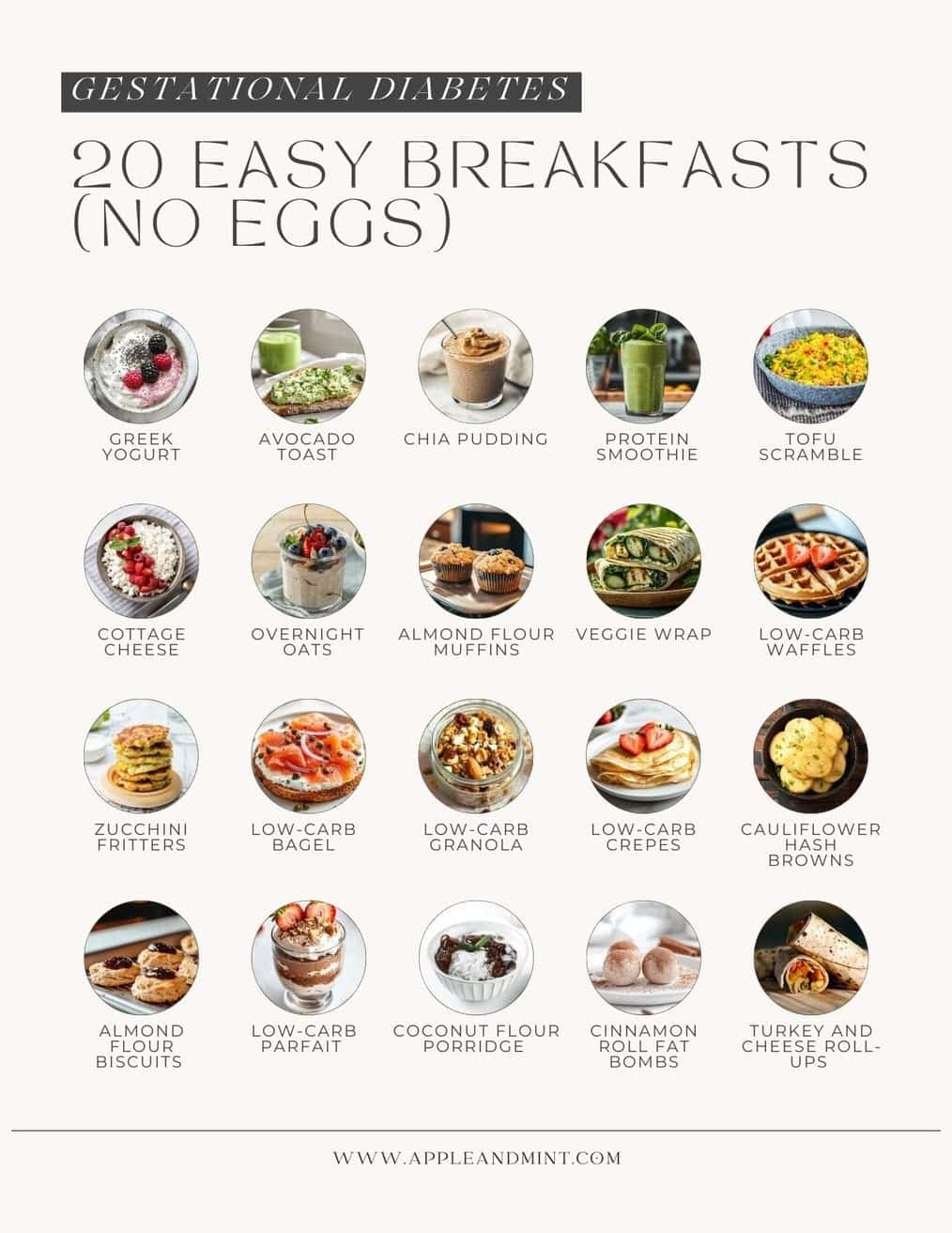
Frequently-Asked Questions
What Time Should I Eat Breakfast with Gestational Diabetes?
It’s generally recommended to eat breakfast within 30-60 minutes of waking up to help manage blood sugar levels.
This helps prevent your blood sugar from dropping too low overnight and keeps things stable throughout the day.
But again, everyone’s different.
If you notice your levels dropping too low in the morning, you might need to tweak your breakfast timing or even try a little snack before bed. Always listen to your body.
How Can I Control My Morning Gestational Diabetes?
- Eat a low-carb breakfast:
- Choose high-protein options like eggs, avocado, or Greek yogurt, which help avoid blood sugar spikes. Foods with a GI under 55 are ideal.
- Avoid high-sugar, high-GI foods:
- Skip sugary cereals, pastries, or sweetened drinks, which can cause rapid increases in blood sugar. Opt for complex carbs like berries or whole grains.
- Portion control:
- Keep your portions of carbs limited, even if they’re low-GI, to prevent overwhelming your blood sugar.
- Pair carbs with protein:
- Combining complex carbs, like whole grain bread, with protein (like cottage cheese) can slow down sugar absorption.
- Consistency in timing:
- Eating breakfast at the same time daily helps maintain stable blood sugar levels.
Can I Go Very Low in Carb or Zero Carb?
Please NO!
I have seen too many people going extreme on low carb diet during their pregnancy. Hence I really need to emphasize this.
When carb intake is drastically reduced, the body enters a state called KETOSIS. In this state, the body starts breaking down fats for energy instead of glucose.
Ketosis can lead to the production of ketones, which may affect fetal brain development and growth. High levels of ketones are associated with complications such as low birth weight or developmental issues.
Conclusion
Finding the right breakfast for managing gestational diabetes can be a game-changer.
I remember feeling completely clueless at first, worrying that my morning spikes would harm my baby. It was a struggle, and I felt guilty about my choices.
But after a month of experimenting, I finally settled into an amazing low-carb morning routine that worked wonders.
What’s even more incredible is that I only gained 8 kg throughout my entire pregnancy, thanks to this list of 20 on-the-go breakfast options for gestational diabetes.
I’ve created a FREE cheat sheet—on 7 easy-to-apply hacks designed to help you reduce sugar spikes after meals by up to 40%. So you can feel more in control, guilt-free, and healthier every day!
These secrets are scientifically proven, without extreme diets or workouts!
Keep it on your fridge for quick reference and make blood sugar management a breeze.
Because you and your baby deserve the best!

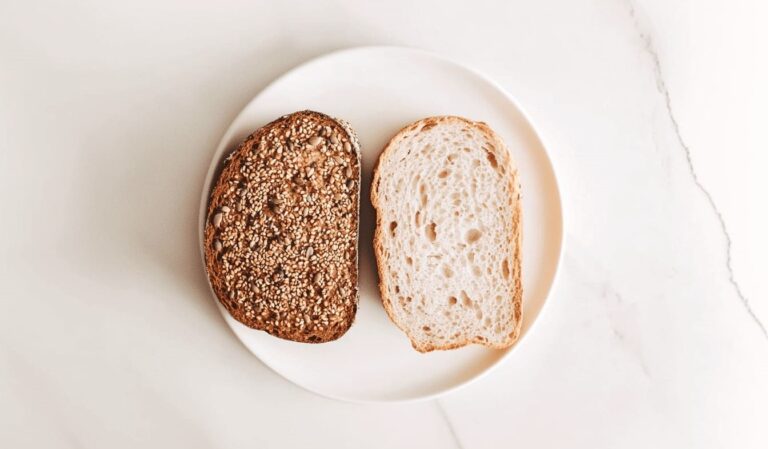


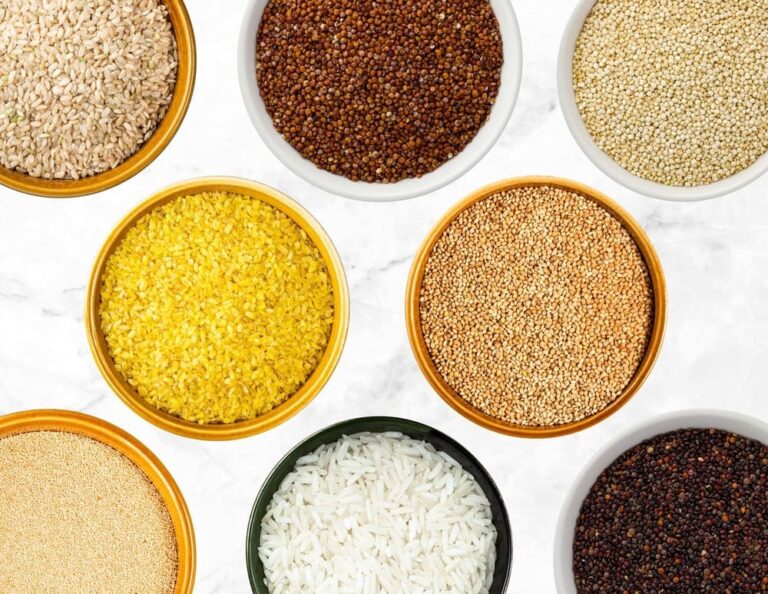
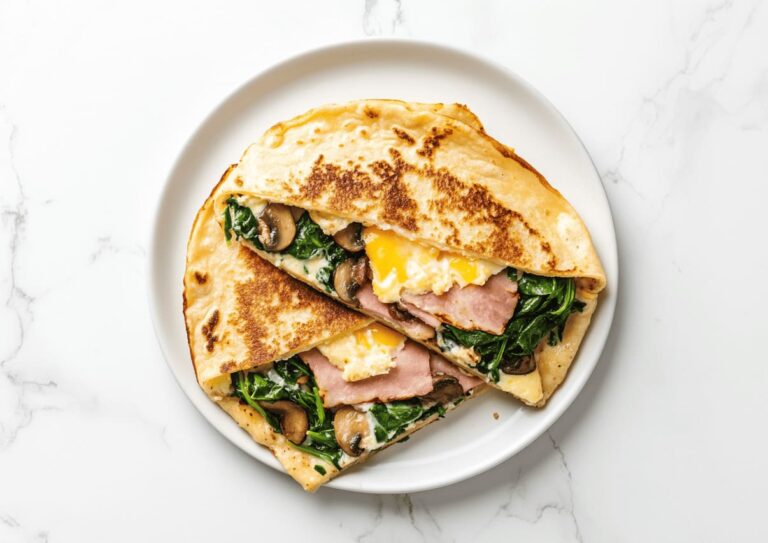
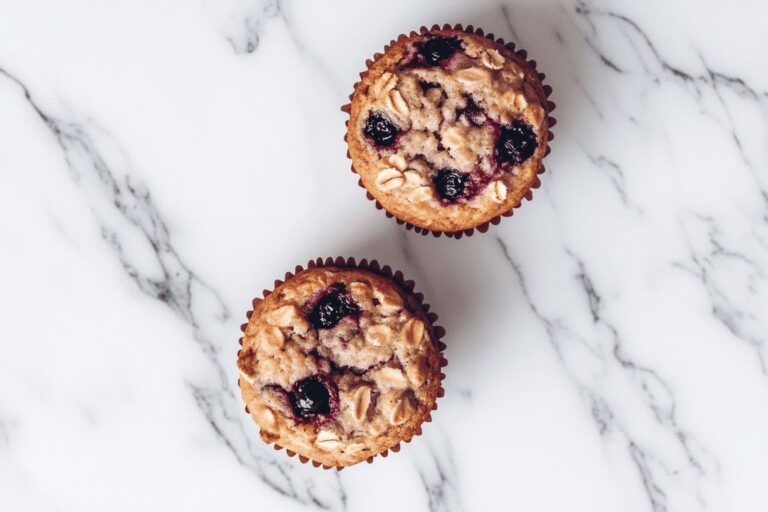
Grateful for Variety: Thank you for these amazing egg-free breakfast ideas! As someone managing gestational diabetes, it’s refreshing to have so many delicious options.
I’ve been struggling with egg fatigue, and your recipes are a lifesaver. The chia seed pudding and avocado toast are now my go-to breakfast. I appreciate the focus on low-carb and high-protein meals. These recipes not only help manage my blood sugar but also keep me full and energized throughout the morning.
These recipes are fantastic! Do you have any suggestions for quick and healthy snacks for gestational diabetes as well?
Feel free to tweak these comments to better fit your personal experience and style!